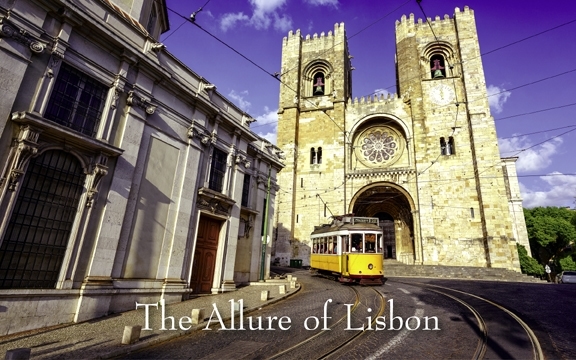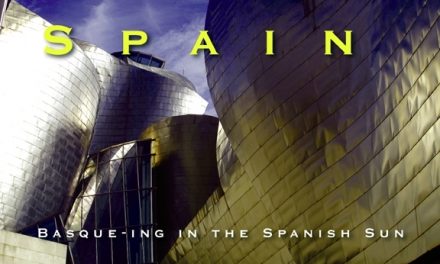Portugal
The Allure of Lisbon
Article and photography by Jennifer Merrick

Portugal has garnered a lot of positive attention in recent years. It’s been on the top of travel lists everywhere; tourism has seen record numbers for six years in a row, and even Madonna has decided to make Portugal her home.
Why has this European nation suddenly become so popular?
“Portugal is the California of Europe,” says Chitra Stern, owner of the country’s award-winning Martinhal Resorts. “It’s got amazing all-year round weather, fantastic people who are so warm and welcoming and the most outstanding food.”
After a recent visit to Portugal’s capital, I now understand what the fuss is about. With its mix of rich culture and stunning natural beauty, I have to admit I’m tempted to join Chitra (and Madonna) in making this country my adopted home.
Lisbon seduced me in no time at all. It wasn’t the 70°F temperatures and sunshine in November or even the narrow, cobbled-stoned streets and historic squares. It was simply the sense of beauty and contentment I felt on my first evening, strolling along the River Tagus, watching the sun drop behind their landmark suspension bridge (which looks exactly like San Fran’s Golden Gate, by the way). I became further enamoured when I bit into their famous custard tarts, listened to the soulful Fado music and looked out from atop of Sao Jorge Castle to a sea of red-tiled roofs.
If you should decide to travel to Portugal’s bewitching capital yourself (and I highly suggest you do), here are few experiences you won’t want to miss.
Ride the trams
Lisbon is nicknamed “The City of Seven Hills”, and they’re steep. Luckily, you can get around on historic trolleys that have been operating in the city since the 1930s. Though they look like they belong in a museum, the trams are well-suited to the narrow, steep streets and are an integral part of the city’s transportation. Route #28 is the most popular and takes you through many of Lisbon’s highlights. Watch your valuables though, as pickpockets have been known to target tourists.
Stroll through Chiado
Our Lisbon apartment, one of Martinhal’s 37 well-equipped family suites, was situated in the heart of one of the city’s best neighbourhoods. Chiado is equal part historic and hip, and its cobbled, narrow streets are full of squares with statues of poets and outdoor patios. It’s easy to lose yourself browsing the many shops selling everything from antiques and traditional pottery to chic clothing and specialty foods.
Nearby is the Santa Justa Lift, an ornate wrought iron public elevator that was built in 1902, so locals could avoid the tough walk up the hill that connects the lower and upper districts. Now it’s mostly tourists who use it, and there’s almost always a line up. But it’s worth the wait to see the stunning view from the top.
Tour the heart of an ancient empire
It’s easy to be unaware of Lisbon’s layer upon layer of history if you’re just walking around on your own. Our knowledgeable and charismatic guide, Joao from Heritage Tours, brought the city’s history to life, regaling us with stories about the Golden Age of Discovery when “King Manuel who rode elephants on the street with a parrot on his shoulder, sprinkling cinnamon and spices.” One of the best places to appreciate the grandeur and richness of the empire is at Jerónimos Monastery. At this architectural marvel, Joao pointed out the ornate details that were influenced by the discoveries Portuguese navigators were making in their travels around the world. It’s also the final resting place of Vasco da Gama, the explorer who discovered the route to India, and brought wealth and fame to Portugal.
View the city from a hilltop castle
At Castle Sao Jorge, situated high above the city, we learned more about the Moorish history of the neighbourhood and the medieval citadel, as we watched the resident peacocks strut their stuff on the castle grounds. But by far, the highlight of the site was wandering along the stone turrets, enjoying the panoramic views of historic Lisbon with its endless red-tiled roofs and the river as its backdrop.
Wander the alleyways of Alfama
Directly below the castle is one of Lisbon’s oldest and most historic neighbourhoods. Alfama is the Moorish heart of the city, which unlike most of the city survived the devastating earthquake of 1755. The maze of cobbled streets and mismatched dwellings reveal visual treats at every turn, including photographs of former residents on the sides of buildings, paying homage to its past. Though trendier now, it was once a rougher and poorer district, and the birthplace of the soulful Fado music.
Bask in the meloncholic chords of Portugal’s blues
“Quiet, the Fado is about to begin,” is a refrain heard in many venues throughout the country before singers croon with the accompaniment of a traditional 12-string guitar. Fado means fate, and the wistful ballads tell of heartbreak, longing and separation, and of times when sailors left their loved ones behind, not knowing when they’d return. At O Faia restaurant, a classic Lisbon venue, we could feel the emotion behind the lyrics, despite not knowing the language. One 81-year-old Fado star, Anita Guerreiro, had the crowd wrapped around her little finger as she threw her head back, and her strong, throaty lyrics filled the room. Between sets, we relished delicious, traditional food, especially enjoying the fresh octopus.
Savour the flavours
Lisboetas, as the city residents are known, take pride in their food as they should and there were oh-so- many memorable meals on our trip. Mercado de Ribeira, now called the Time Out Market, is the oldest and largest food market in Lisbon, where you’ll find dozens of vendors selling Portuguese fare, international food, snacks, wine and crafts. It’s also the best place to sample a Pastéis de Nata. My eyes rolled back in my head when I tried these heavenly egg custard tarts, and I loved watching my travel companions have the same reaction. The Belem tarts are the most famous, but according to locals, the ones at Manteigaria are actually the best.
Portuguese cuisine is appreciated and recognized more than ever, thanks to chefs like José de Avillez, owner of several Lisboa restaurants, including the Bairro do Avillez, which we had the pleasure of dining in. Their innovative dishes stay true to their roots but surprise with their flavours. The ‘exploding olives’ literally burst in your mouth, and their variety of seafood and cheeses are creative and delicious.
If you go:
Flights: Nonstop flights are available on TAP Portugal from JFK and Newark
www.flytap.com
Accommodations: Martinhal Chiado Family Suites
www.visitportugal.com/en
Click on cover to view published article






